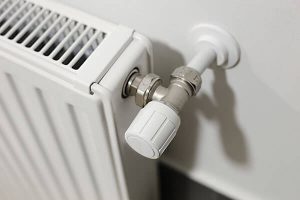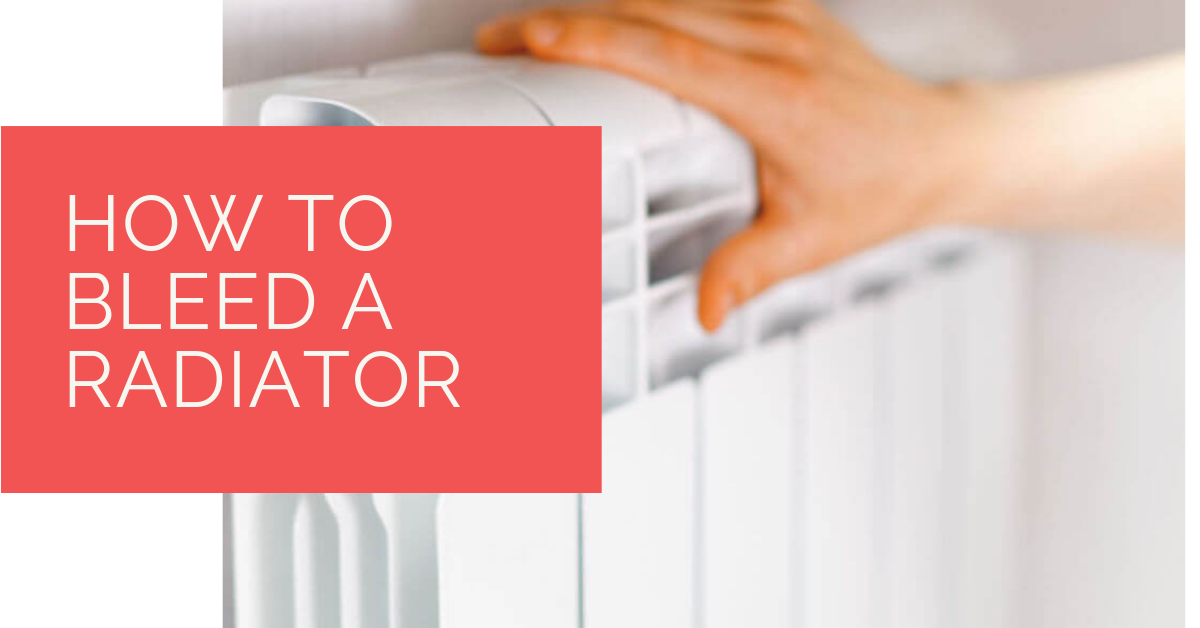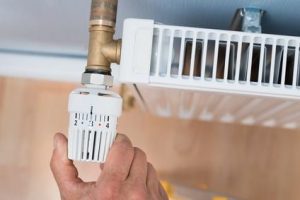Is there a radiator in your home that feels cold to the touch even when the heat is turned up high? This may indicate that there is trapped air in your radiator and it is constructing normal flow. Fortunately, this very common problem can be easily fixed with only a few basic tools.
Contents
Key Takeaways
- Bleeding a radiator is necessary when trapped air prevents normal heat flow, which can be diagnosed by feeling cold spots at the top or entirety of the radiator.
- To bleed a radiator, use a radiator key or suitable tool to open the bleed valve, releasing trapped air until a steady stream of water flows out, indicating all air has been released.
- It’s essential to bleed all radiators in the home, even if only one seems problematic, and to regularly bleed radiators for optimal heating system maintenance, typically annually or after system modifications.
Diagnostics
Your radiator may require bleeding because it has air that is cool being trapped in its upper section. You will know there is an issue if after you turn on the heat, either the bottom portion feels warm while the top portion feels cold or the entire radiator feels cold. As a side note, a cold radiator can also indicate other issues. Therefore, it is important to also investigate all of the other common issues caused by non-functioning radiators. If none of the other issues seems to be a problem then your radiator may require only simple bleeding.
Always be cautious, radiators can become quite hot and it may be necessary to protect your hands before feeling for warmth. If you have more than one radiator in your home and they all are not functioning properly, it could mean that you have a bigger heating system issue. If you notice water accumulation below the radiator then the issue might be a leak.
Sometimes a leak can be fixed simply by turning off the heat and tightening all of the nuts on the radiator’s inlet valve. If you live in a home that has two floors and the radiators on the lower floor are functioning fine but the radiators on the upper floor are not, then it may be a boiler pressure issue.

Radiator Key
If you decide that the issue is simply a matter of bleeding the radiator, search for a radiator key to open up the bleed valve. The bleed valve will be at the top of one end of your radiator and it is a small valve. Most hardware stores carry radiator keys if you cannot find one. You need to use a radiator key that is the correct size. You can also open up the valve with a small wrench. Some of the more modern radiators come with valves that can be opened easily with a simple flat-head screwdriver. Remember, if you decide to bleed one radiator then you should also bleed every radiator in your home.
Heat – On/Off
Before you begin bleeding the radiator, it is important to turn the central heating switch off. An active central heating system will introduce more air into the system. You will want all of the radiator’s content to completely settle before you can release any trapped air within. Allow some time for the heat to dissipate. Check each radiator, top and bottom, for heat and if there is still warmth, allow it to cool down some more before proceeding to the next step.
Radiator Valve- Open
Turn both the exit and intake valves of your radiator to the open position. Next, put your radiator key into the bleed screw and turn it counter-clockwise so as to open the valve. You should at this time be hearing a hissing sound as any trapped air starts to escape from your radiator. As the air escapes, there will also probably be water sputter from the bleed valve. Simply place a cloth or kitchen towel underneath the bleed screw and catch any drips of water.
Once a steady stream, not sputtering, comes through the bleed valve it means that all of the air trapped inside of your radiator has been released. At this point, you can close the bleed valve by screwing it clockwise. Check to see that there are no additional leaks and then use a cloth to wipe up any excessive water.
You want to make sure that all of the excess air has been drained from your heating system by bleeding all of the radiators. This is important even if you are only having a problem with one radiator. In fact, it is important to bleed your radiators regularly for a well-maintained heating system. Normally, annual bleeding is adequate or if you have had any modifications or repairs recently done to your heating system then you should also use this as an opportunity to bleed the entire system. Your final step will be to make sure that the boiler’s pressure level is correct.
Case Study: Effective Maintenance and Radiator Bleeding for Optimal Home Heating
Background
A homeowner approached Heat Pump Source with concerns about uneven heating in their two-storey house. The issue was particularly noticeable in the upstairs bedrooms, where the radiators remained cool even when the heating system was on full. The client reported that the radiators had not been bled for several years, which is a common oversight in regular home maintenance.
Project Overview
The primary objective was to diagnose and rectify the heating inefficiencies by bleeding all the radiators in the home. This procedure aimed to remove trapped air pockets that were preventing the radiators from heating properly. We also planned to inspect the overall condition of the heating system, ensuring that the boiler pressure and other components were functioning correctly.
Implementation
Diagnostics and Preparation
- System Assessment: Our team first checked the boiler’s pressure and inspected the heating system for any visible issues, such as leaks or rust.
- Radiator Check: We identified cold spots on several radiators, indicating trapped air. The cold was more pronounced in radiators located on the upper floor.
Bleeding Process
- Turn Off Heating: The central heating system was turned off and allowed to cool to prevent any risk of burns and to stop the system from pulling more air into the radiators.
- Bleeding Radiators: Using a radiator key, we carefully opened the bleed valves on all radiators, starting with the ones on the ground floor and moving upwards. As expected, air escaped from the valves, followed by water once the air was fully expelled.
- System Check: After bleeding, we checked the boiler pressure and topped it up as needed. We then restarted the system and checked all radiators to ensure even heating.
Final Checks and Adjustments
- Pressure Adjustment: Ensured the boiler pressure was at the recommended level after the bleeding process.
- Post-Bleeding Inspection: Verified that all radiators heated evenly and that there were no leaks from the bleed valves or any other parts of the system.
Results
- Improved Heating Efficiency: The radiators now provided consistent heat, with no cold spots, significantly improving comfort levels throughout the home.
- System Health: Regular bleeding and maintenance helped prevent potential issues, such as corrosion or system inefficiencies.
- Customer Satisfaction: The client expressed satisfaction with the quick and effective solution, noting an immediate improvement in home warmth and comfort.
Summary
This case study highlights the importance of regular radiator bleeding as part of home heating system maintenance. At Heat Pump Source, we successfully addressed the homeowner’s concerns by removing trapped air, ensuring that the radiators functioned efficiently. This not only improved the immediate comfort of the home but also contributed to the long-term health of the heating system. Regular maintenance, including annual radiator bleeding, is a simple yet crucial practice to ensure optimal performance and energy efficiency. Our expertise in handling such routine tasks underscores our commitment to delivering reliable and effective HVAC solutions tailored to each client’s needs.
Expert Insights About How to Bleed a Radiator
Bleeding a radiator is an essential maintenance task that ensures your heating system operates efficiently. When air gets trapped, it can prevent proper heat distribution, making parts of the radiator feel cold. Regular bleeding helps to release this air, ensuring your radiators provide even heat throughout your home.
Senior HVAC Technician
It’s a common misconception that only problematic radiators need bleeding. In reality, for optimal system performance, all radiators should be bled periodically. This simple task can prevent potential issues and prolong the lifespan of your heating system.
Maintenance Specialist
Using the correct tools, such as a radiator key or appropriate screwdriver, is crucial when bleeding radiators. Incorrect tools can damage the bleed valve, leading to leaks or ineffective air release.
Technical Support Engineer
Heat Pump Source: Reliable Heating and Cooling Solutions
At Heat Pump Source, we take pride in our unwavering commitment to serving the UK with top-tier HVAC solutions. From the efficiency of heat pumps and the cool relief of air conditioning to the warmth of boilers, radiators, and underfloor heating, our dedicated team is always at the forefront of innovation. We understand the unique needs of every household and business, and we strive to provide dependable health and cooling products and services that are tailored just for you. Ensuring your comfort and satisfaction is our utmost priority. Whether you have questions, need guidance, or require support, we’re always here to assist. Please don’t hesitate to contact us; we’re eager to be of service.
Conclusion
Radiators play a crucial role in maintaining the warmth and comfort of our homes. However, like any system, they can encounter issues such as trapped air, which can hinder their efficiency. Fortunately, the process of bleeding a radiator to release this trapped air is straightforward and can be done with basic tools like a radiator key. It’s vital to remember that if one radiator shows signs of trapped air, it’s a good practice to bleed all radiators in the home to ensure optimal performance. Regular maintenance, including annual bleeding or after any system modifications, is essential for the longevity and efficiency of your heating system. By following the steps outlined in this article, homeowners can ensure that their radiators function at their best, providing consistent warmth throughout the colder months.
About the Author
At Heat Pump Source, our articles are the product of a collaborative effort among a team of highly skilled HVAC experts. Our dedicated professionals, hailing from diverse backgrounds in heating, ventilation, air conditioning, and refrigeration, contribute their extensive knowledge and experience to every piece of content. This multidisciplinary approach ensures comprehensive coverage. Our commitment is to deliver authoritative, reliable, and tailored advice to meet the unique needs of every household and business across the UK.


